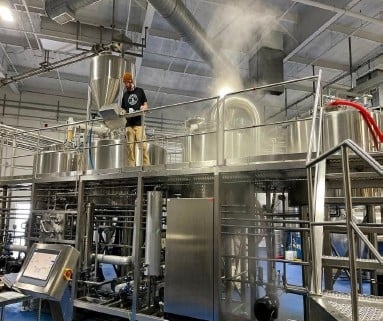The Importance of Beer Brewing Tanks in Beer Production
What Are Beer Brewing Tanks?
Let’s be honest, when we think about beer, we usually picture the frothy pint in our hand, not the giant tanks behind the scenes that make it all possible. But beer brewing tanks are the unsung heroes of the entire brewing process. They are the sturdy vessels where the magic of turning simple ingredients like water, malt, hops, and yeast into delicious beer happens.
In simple terms, beer brewing tanks are specially designed containers used at various stages of the beer-making process. From fermentation to conditioning, each type of tank plays a unique role in shaping the final product. Whether you’re brewing a small batch in your garage or running a large commercial brewery, you can’t skip using these essential tanks. And guess what? Choosing the right one can make or break your beer’s flavor, texture, and even its aroma.

Types of Beer Brewing Tanks: Choosing the Right Vessel for Each Stage
When it comes to brewing beer, there’s no one-size-fits-all tank. Different tanks are needed at each step to ensure that your brew turns out just right. Let’s dive into the main types you’ll find in the brewing world.
Fermentation Tanks:
These are the heart of the brewing process. In fermentation tanks, yeast meets wort (unfermented beer) and kicks off the fermentation frenzy, converting sugars into alcohol and carbon dioxide. Fermentation tanks can be cylindrical, conical, or horizontal. Conical fermenters are fan favorites because they let the yeast settle at the bottom, making it super easy to collect or remove.
Bright Beer Tanks:
After fermentation, beer moves to bright beer tanks for maturation and carbonation. These tanks help clarify the beer, making it, well, “bright” and ready for packaging. They offer the brewer control over carbonation levels, so whether you want your beer fizzy or smooth, this is the tank that does the job.
Brite Tanks vs. Serving Tanks:
While brite tanks are for final conditioning, serving tanks are the endpoint, from which beer is directly dispensed. Some breweries combine these two to save space. Serving tanks can sometimes be pressurized to maintain freshness, especially for draft beer.
Mash Tuns and Lauter Tuns:
These tanks handle the earlier brewing stages. Mash tuns are where grains mix with water to extract sugars, while lauter tuns separate the liquid wort from the grain.
Hot and Cold Liquor Tanks:
Despite the name, these aren’t about spirits. In brewing, “liquor” just means water. Hot liquor tanks hold hot water for mashing and sparging, and cold liquor tanks store chilled water for cooling the wort.
Comparison of Beer Brewing Tanks
| Tank Type | Purpose | Advantage | Disadvantage |
|---|---|---|---|
| Fermentation Tanks | Converts sugars to alcohol | Easy yeast collection, flavor control | Requires strict temperature control |
| Bright Beer Tanks | Maturation and carbonation | Enhances clarity, final carbonation | Requires transfer from fermenter |
| Serving Tanks | Dispensing beer | Space-saving, direct serving | Limited storage capacity |
| Mash Tuns | Sugar extraction from grains | Crucial for flavor base | Requires precise temperature management |
| Lauter Tuns | Wort separation | Efficient wort collection | Can be time-consuming |
| Hot Liquor Tanks | Stores hot water | Consistent hot water supply | Needs good insulation |
| Cold Liquor Tanks | Stores cold water | Helps rapid cooling | Adds extra tank space |
Material and Design of Beer Brewing Tanks: Stainless Steel vs. Other Options
When you’re eyeing beer brewing tanks, you can’t overlook the materials. Stainless steel reigns supreme in breweries around the world, and for good reason. It’s durable, easy to clean, and doesn’t mess with your beer’s flavor.
Stainless Steel Tanks:
They are basically the gold standard. Stainless steel doesn’t react with the beer, is corrosion-resistant, and can handle the high pressures in fermentation and carbonation processes. Plus, it just looks sleek—and who doesn’t want shiny tanks in their brewery?
Plastic Tanks:
Sometimes used in homebrewing or small setups because they are cheaper and lightweight. But here’s the catch—plastic can scratch easily, and those scratches can harbor bacteria. Plus, plastic tanks often don’t offer the same longevity or pressure resistance as stainless steel.
Glass Tanks:
They look cool, sure, but glass tanks are more fragile and tricky to clean. Most commercial brewers steer clear of glass due to safety risks.
Copper Tanks:
Copper was used traditionally, and it still appears in some older breweries. Copper has great heat conductivity, but it’s prone to corrosion and needs more maintenance. Stainless steel has mostly pushed copper aside these days.
Tank Design Matters:
The design isn’t just for looks. Conical fermenters with steep angles help with yeast collection. Horizontal tanks provide more surface area for faster settling. Pressurized tanks maintain carbonation, and insulated tanks are essential for temperature control.
Materials and Design Features Compared
| Material | Pros | Cons |
|---|---|---|
| Stainless Steel | Durable, hygienic, non-reactive | More expensive upfront |
| Plastic | Cheap, lightweight | Scratches easily, bacterial risks |
| Glass | Visual appeal | Fragile, hard to clean |
| Copper | Good heat conductivity | Prone to corrosion, higher upkeep |
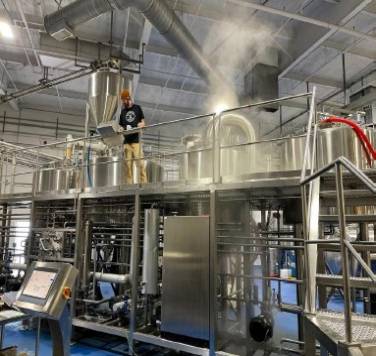

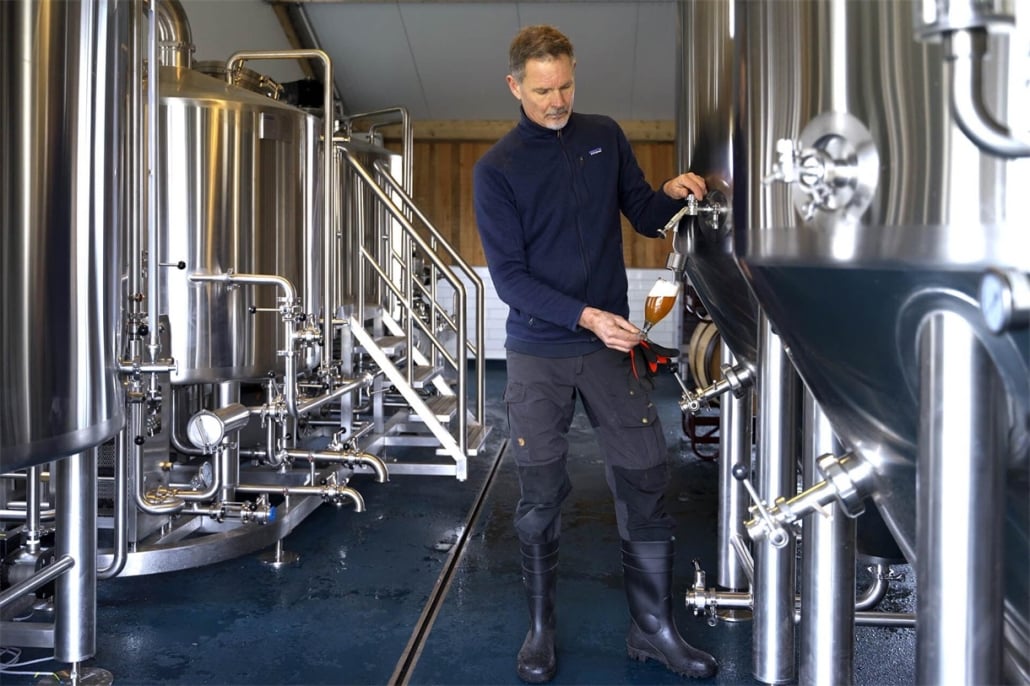
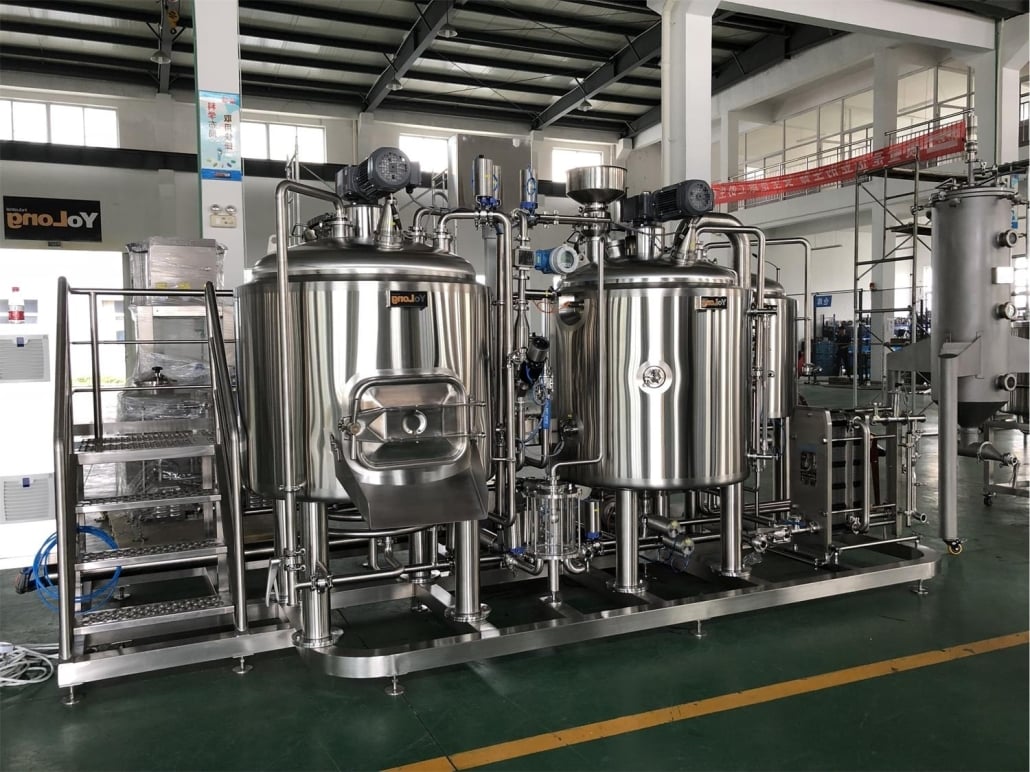
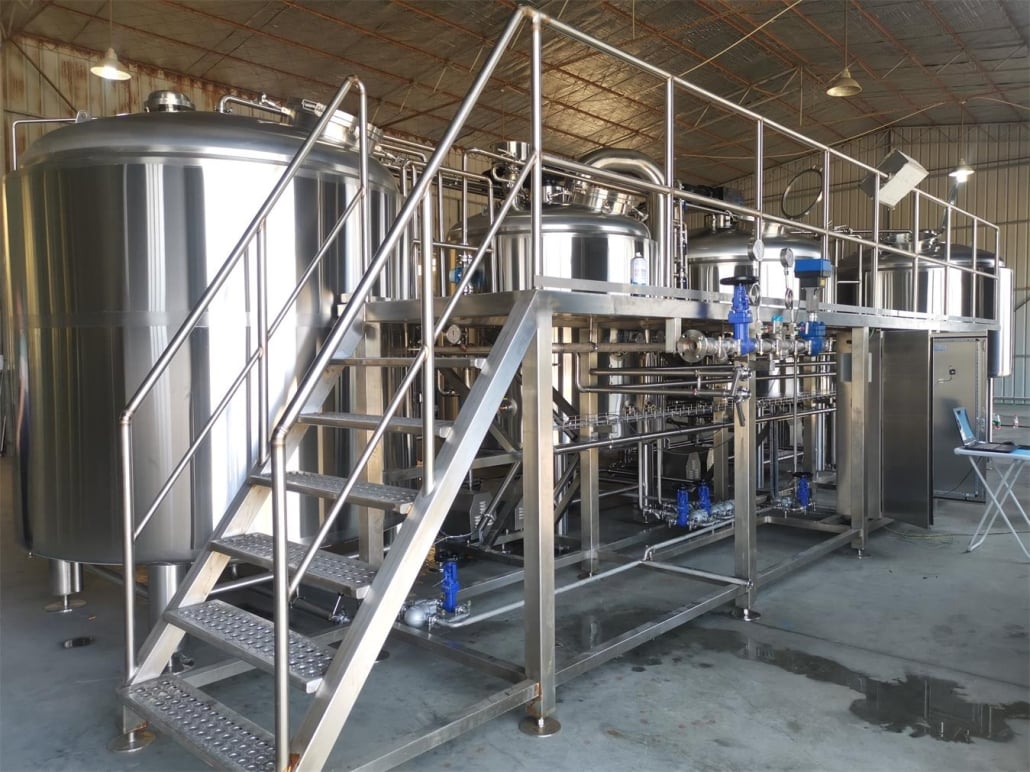
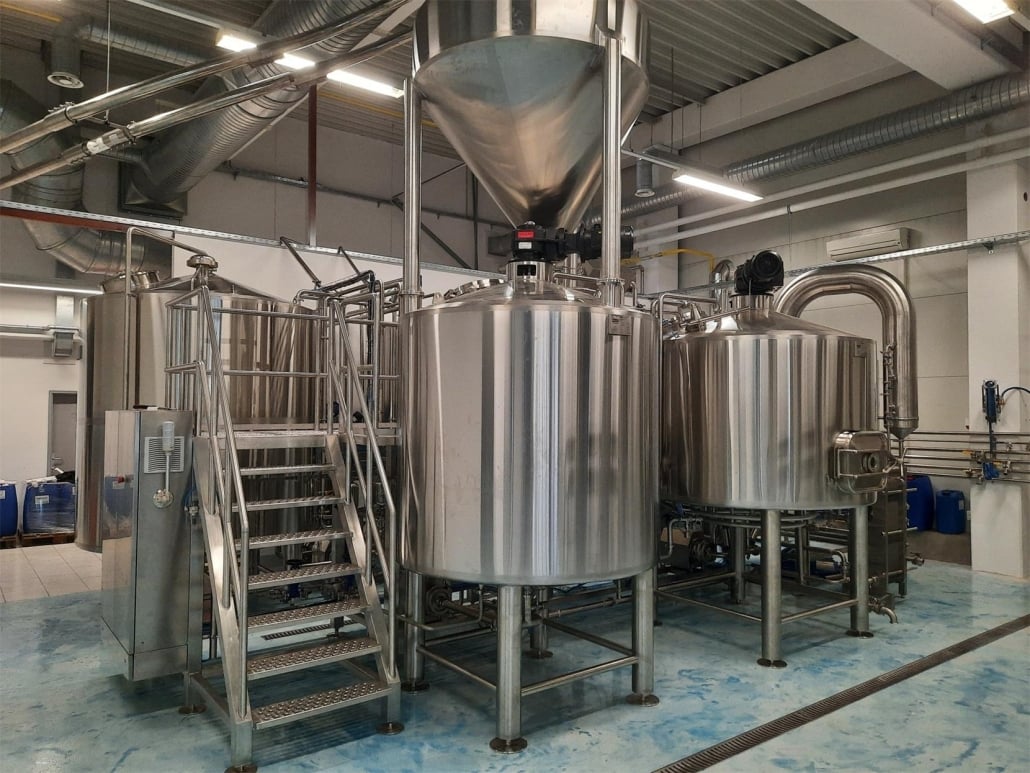
How to Choose the Right Brewing Tank: Key Factors to Consider
So, how do you pick the perfect brewing tank? It’s not just about size; it’s about matching the tank to your brewing goals.
Batch Size and Production Volume:
Are you brewing 50 liters or 5,000 liters? Smaller tanks are ideal for homebrewers or pilot batches, while large-scale operations need tanks that can handle massive volumes.
Material Selection:
Stainless steel is your best bet for durability and hygiene, especially if you plan on scaling your brewing.
Temperature Control:
Look for tanks with built-in jackets for heating and cooling. Trust me, maintaining the right temperature can be the difference between a smooth lager and a failed brew.
Space and Layout:
How much room do you have? Vertical tanks save floor space, but you need enough ceiling clearance. Horizontal tanks can fit under lower ceilings but take up more floor area.
Pressure Ratings:
If you want to carbonate inside the tank, make sure it can handle the pressure. Not all fermentation tanks are built for this.
Budget:
Let’s be real—cost matters. While stainless steel tanks have higher upfront costs, they last much longer than cheaper plastic options.
Tank Selection Comparison
| Factor | Small Batch Brewing | Commercial Brewing |
|---|---|---|
| Batch Size | 20-500 liters | 1,000-50,000 liters |
| Material | Stainless steel, plastic | Stainless steel |
| Temperature Control | Optional external chillers | Integrated cooling jackets |
| Space Requirement | Compact, stackable | Requires spacious layout |
| Budget | Low to moderate | High initial investment |
Maintenance and Cleaning Tips of Beer Brewing Tanks: Keeping It Spotless
Here’s the thing about beer brewing tanks: if you don’t keep them sparkling clean, your beer can quickly go from tasty to tragic. Regular maintenance isn’t just about hygiene—it’s about preserving flavor and extending the life of your tanks.
Clean-in-Place (CIP) Systems:
Many modern tanks come with built-in CIP systems that make cleaning much easier. You just hook up a cleaning solution, let it circulate, and it scrubs the inside walls without taking the tank apart. It’s like a dishwasher for your brewing gear!
Routine Inspections:
Look out for scratches, dents, or signs of wear. Even small cracks can harbor bacteria and ruin your next batch.
Cleaning Frequency:
Ideally, you should clean fermentation tanks after every batch. Bright beer tanks should also be cleaned before each new use to prevent cross-contamination.
Cleaning Chemicals:
Use brewers’ approved detergents and sanitizers. Stay away from abrasive tools that can scratch the tank’s surface, especially with plastic and stainless steel.
Tank Cleaning and Maintenance Tips
| Maintenance Task | Importance | Best Practice |
|---|---|---|
| Clean-in-Place (CIP) | Ensures thorough cleaning | Use after every batch |
| Regular Inspection | Prevents contamination | Check weekly for damage |
| Sanitizing | Protects beer flavor | Sanitize before every new batch |
| Avoiding Abrasives | Preserves tank surface integrity | Use soft brushes or approved solutions |
Mainstream Beer Brewing Tank Suppliers: Trusted Names in the Industry
If you’re diving into brewing seriously, you’ll want to source your tanks from reputable manufacturers. Some brands have stood the test of time and earned the trust of brewers worldwide.
Ss Brewtech:
Known for innovation, especially for home and small-scale brewers. They offer compact, affordable stainless steel fermenters with lots of professional features.
Blichmann Engineering:
A favorite among serious hobbyists and microbreweries. Blichmann tanks are known for their precise craftsmanship and excellent customer support.
China-based Manufacturers:
Many budget-friendly options come from Chinese suppliers like Jinan Tiantai and Shandong Cassman. They offer competitive pricing and customizable solutions, though shipping and lead times can vary.
Specific Mechanical Systems:
A top-tier choice for commercial breweries. Their tanks are robust, aesthetically polished, and built to handle large volumes with precision.
Comparison of Popular Brewing Tank Brands
| Supplier | Strengths | Potential Drawbacks |
|---|---|---|
| Ss Brewtech | Innovative, affordable, great for small setups | Limited large-scale options |
| Blichmann Engineering | High quality, excellent customer service | Higher price point |
| Jinan Tiantai/Shandong Cassman | Cost-effective, customizable | Longer shipping, variable quality |
| Specific Mechanical Systems | Premium quality, reliable | Significant upfront investment |
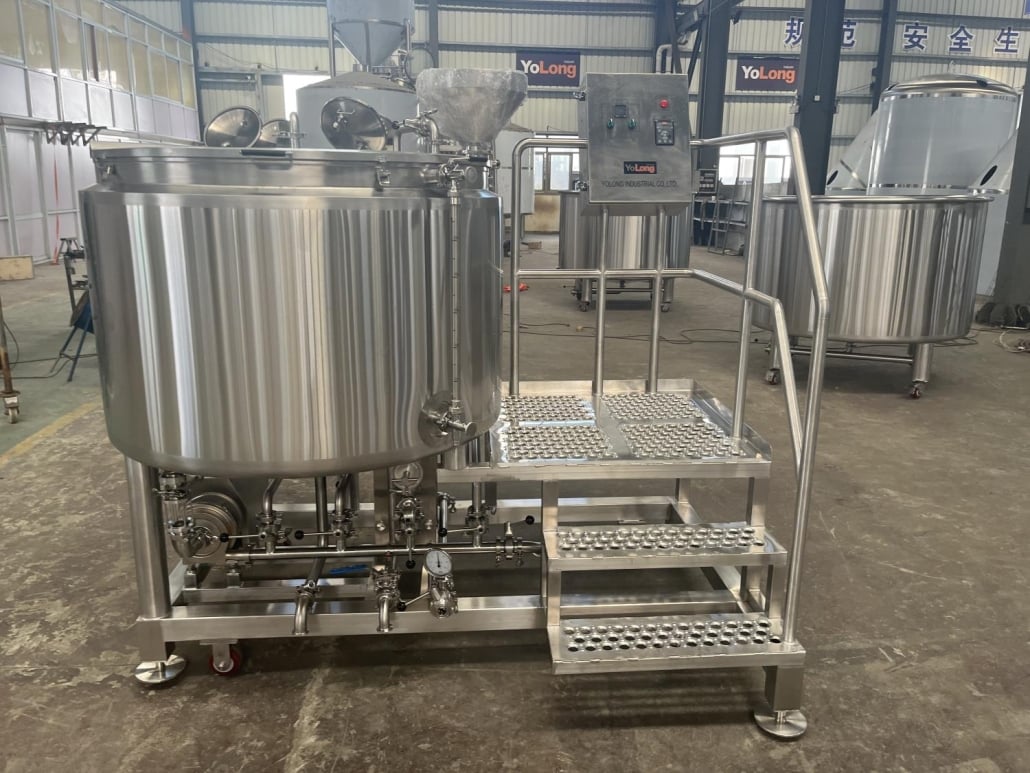
FAQs
| Question | Answer |
|---|---|
| What is the best material for brewing tanks? | Stainless steel is best due to durability, hygiene, and pressure resistance. |
| How often should I clean beer brewing tanks? | After every batch to maintain beer quality and prevent contamination. |
| Can I use plastic tanks for commercial brewing? | Plastic is generally only suitable for homebrewing or small test batches. |
| What size brewing tank do I need? | Depends on your batch size; small setups use 20-500 liters, commercial breweries use 1,000+ liters. |
| Are CIP systems necessary? | Not mandatory, but highly recommended for efficiency and thorough cleaning. |
| How long do stainless steel brewing tanks last? | With proper maintenance, they can last over 20 years. |
| What’s the difference between fermenters and bright tanks? | Fermenters convert sugars to alcohol; bright tanks condition and carbonate the beer. |

